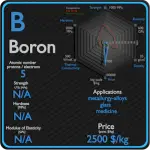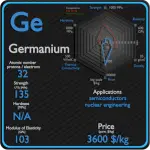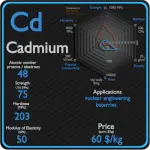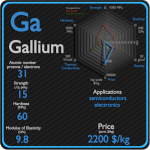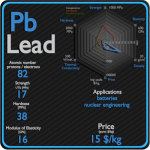This article contains comparison of key thermal and atomic properties of silicon and arsenic, two comparable chemical elements from the periodic table. It also contains basic descriptions and applications of both elements. Silicon vs Arsenic.
![]()
Silicon and Arsenic – About Elements
![]()
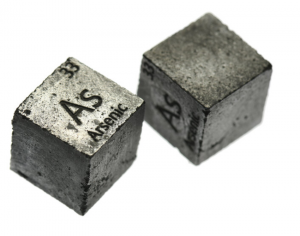
Source: www.luciteria.com
Silicon and Arsenic – Applications
Silicon
Most silicon is used industrially without being purified, and indeed, often with comparatively little processing from its natural form. Silicon is a vital ingredient in aluminum, steel, and iron alloys. It is added as a fluxing agent for copper alloys. In the form of clay and sand, it is used to manufacture bricks and concrete; it is a valuable refractory material for high-temperature work, for example, molding sands for castings in foundry applications. Silica is used to make fire brick, a type of ceramic. Silicate minerals are also in whiteware ceramics, an important class of products usually containing various types of fired clay minerals (natural aluminium phyllosilicates). An example is porcelain, which is based on the silicate mineral kaolinite. Traditional glass (silica-based soda-lime glass) also functions in many of the same ways, and also is used for windows and containers. Hyperpure silicon metal and doped hyperpure silicon (doping with boron, phosphorous, gallium, or arsenic) are used in solar cells, transistors and semiconductors.
Arsenic
Arsenic is used as a doping agent in semiconductors (gallium arsenide) for solid-state devices. It is also used in bronzing, pyrotechnics and for hardening shot. Arsenic compounds can be used to make special glass and preserve wood.
Silicon and Arsenic – Comparison in Table
| Element | Silicon | Arsenic |
| Density | 2.33 g/cm3 | 5.727 g/cm3 |
| Ultimate Tensile Strength | 170 MPa | N/A |
| Yield Strength | 165 MPa | N/A |
| Young’s Modulus of Elasticity | 150 GPa | 8 GPa |
| Mohs Scale | 7 | 3.5 |
| Brinell Hardness | 2300 MPa | 1440 MPa |
| Vickers Hardness | N/A | N/A |
| Melting Point | 1410 °C | 817 °C |
| Boiling Point | 3265 °C | 614 °C |
| Thermal Conductivity | 148 W/mK | 50 W/mK |
| Thermal Expansion Coefficient | 2.6 µm/mK | 5.6 µm/mK |
| Specific Heat | 0.71 J/g K | 0.33 J/g K |
| Heat of Fusion | 50.55 kJ/mol | N/A |
| Heat of Vaporization | 384.22 kJ/mol | 34.76 kJ/mol |

